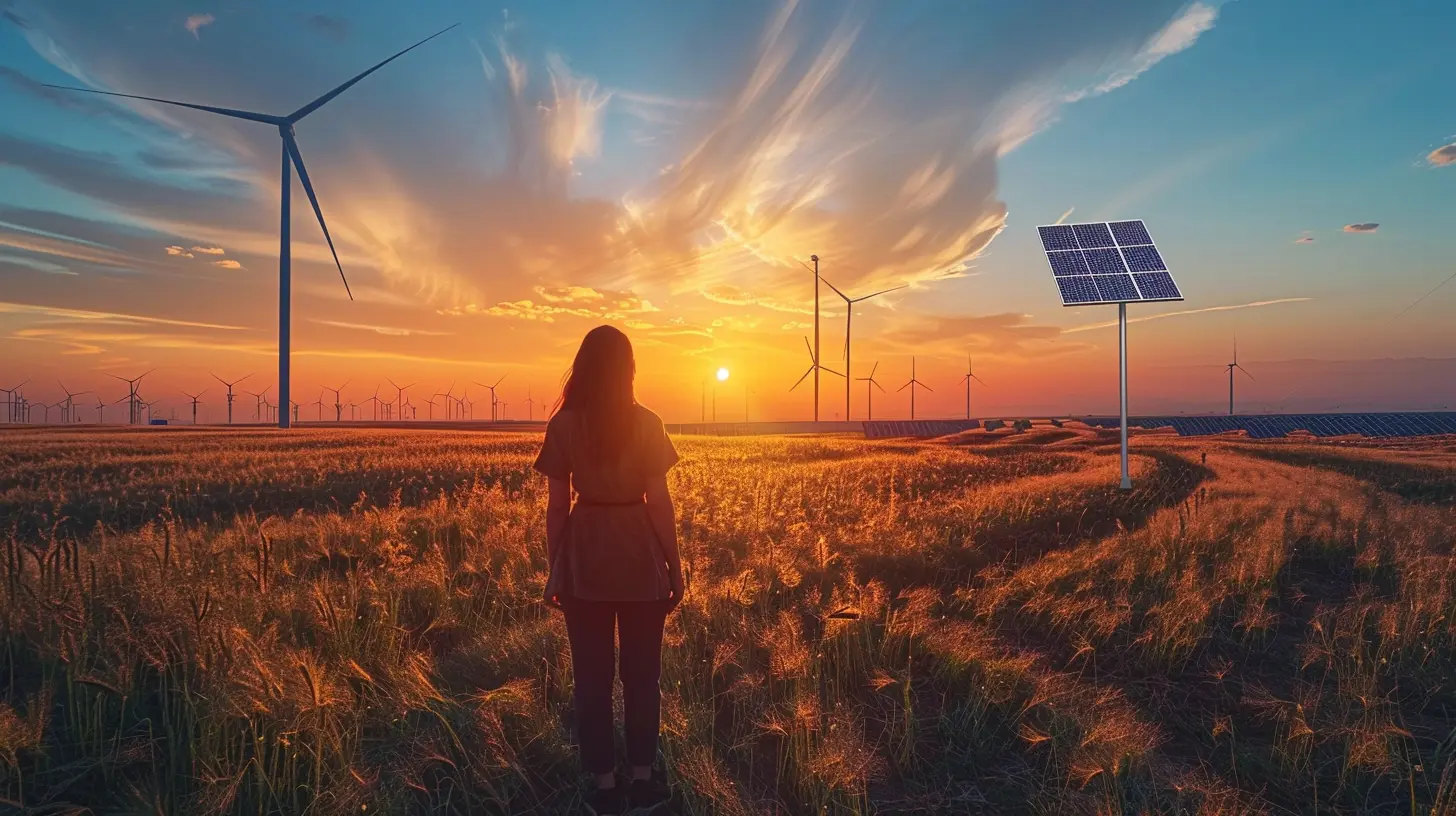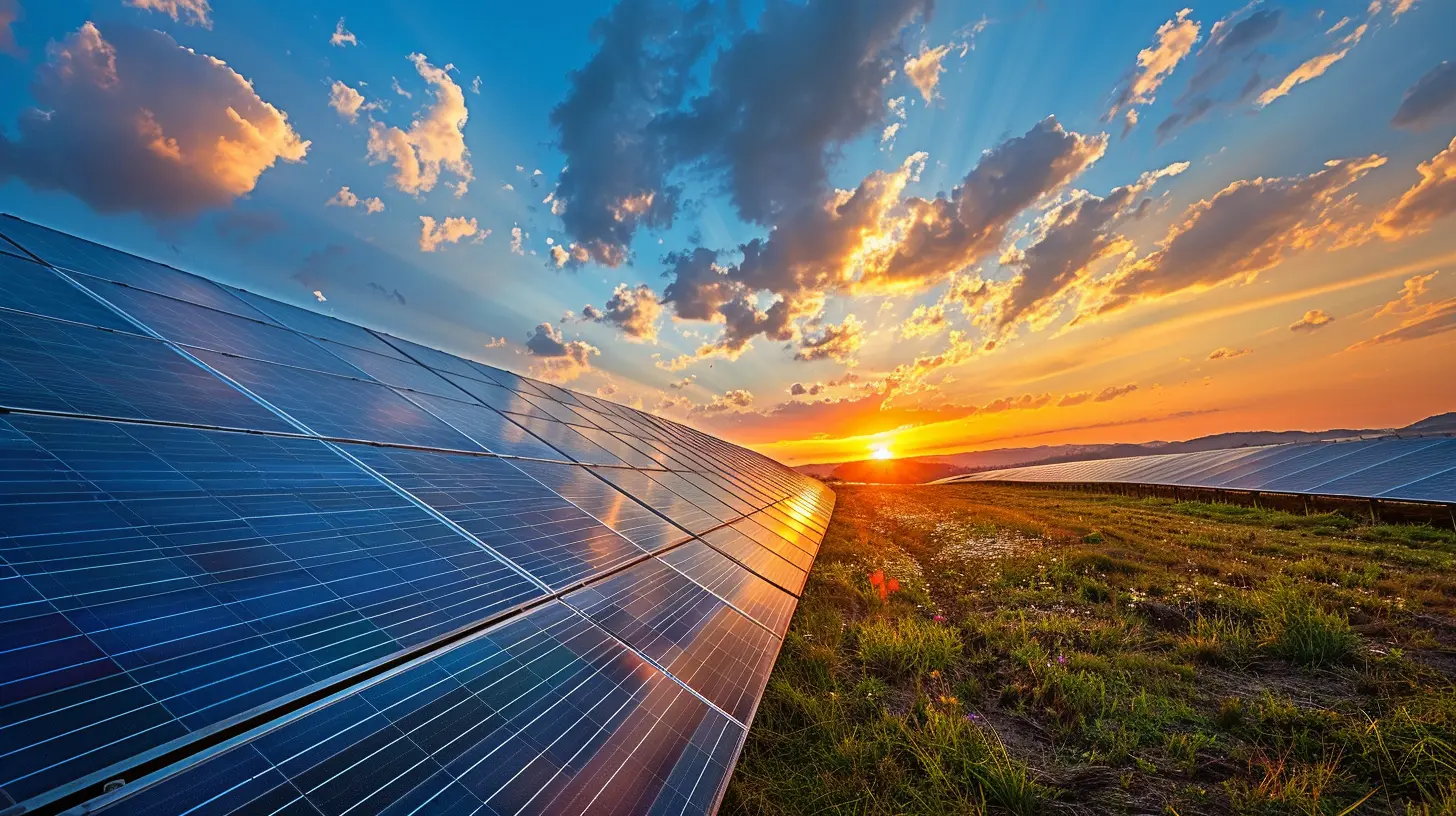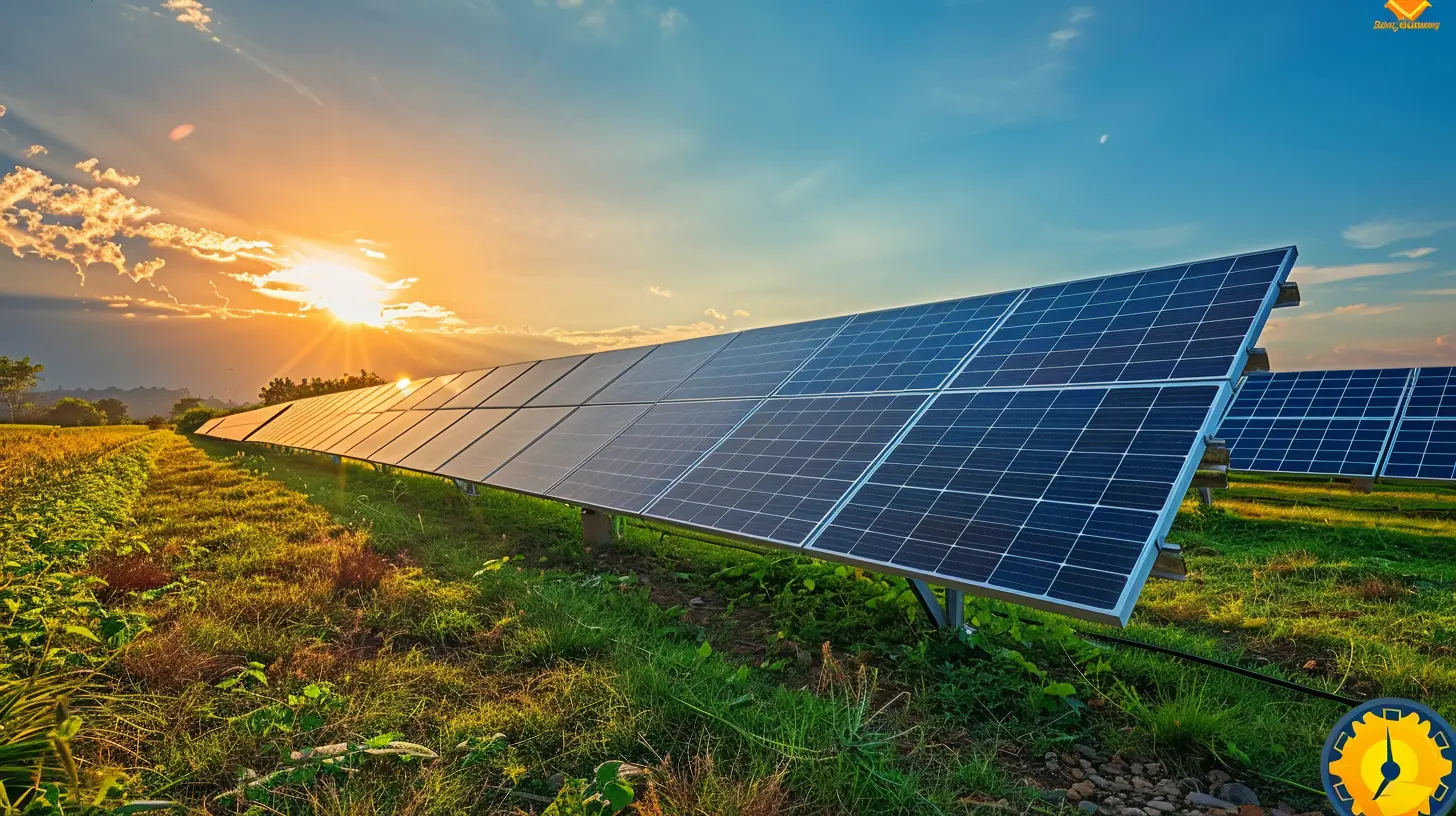Battery Storage: The Key to Renewable Energy Efficiency
21 January 2025
The future of energy is renewable. With the growing need for cleaner, more sustainable power sources, we’ve seen a massive uptick in wind, solar, and other renewable energy options. But, let’s be real for a second: there’s one big challenge that keeps popping up—how do we store all this energy efficiently when the sun isn’t shining or the wind isn't blowing? The answer lies in battery storage.
Battery storage is quickly becoming the backbone of renewable energy systems, ensuring that we can store excess energy when it's available and use it when it's not. But how does it all work? And why is it so crucial for making renewable energy truly practical? Let’s dive into the world of battery storage and discover why it’s the unsung hero of the green energy revolution.
What is Battery Storage?
Let's start with the basics. When we talk about battery storage, we’re referring to the technology that allows us to store energy in batteries for later use. Think of it like a giant power bank for your home or even the entire electrical grid.These battery systems are designed to capture excess electricity generated by renewable sources like solar panels or wind turbines. Instead of letting that extra energy go to waste, it’s stored in the battery to be used when energy production slows down, like during cloudy days or calm, windless nights.
Why is Battery Storage Important for Renewable Energy?
You might be wondering, “Why not just use renewable energy directly?” Well, here's the catch: renewable energy sources are often intermittent. The sun doesn’t always shine, and the wind doesn’t always blow when we need power. This variability can make renewable energy unreliable without a backup system in place.Enter battery storage. It acts as a buffer, ensuring that even when renewable energy sources aren't producing, we can still tap into the power stored in batteries. Without it, we'd be stuck relying on fossil fuels or other non-renewable energy sources to fill the gap.
How Battery Storage Works
The magic of battery storage lies in its ability to capture, store, and discharge energy. But how does this process actually work? Let’s break it down.1. Energy Capture
The first step is capturing excess energy. When renewable sources generate more electricity than we currently need, that extra energy doesn’t just disappear into the ether. Instead, it’s directed into batteries for storage.For example, during a sunny day, your solar panels might produce more electricity than your home consumes. Rather than feeding all that excess energy back into the grid (which can be inefficient), it gets stored in a battery for later use.
2. Energy Storage
Once the energy is captured, it needs to be stored. This is where the battery comes into play. Modern battery systems, especially lithium-ion batteries, are incredibly efficient at holding onto that energy until it’s needed.Lithium-ion technology, which powers everything from smartphones to electric vehicles, is currently the gold standard for energy storage. It’s lightweight, has a high energy density, and can hold a charge for long periods of time. Plus, advancements in battery technology are continuously improving storage capacity and efficiency.
3. Energy Discharge
Finally, when energy demand outpaces the supply from renewable sources, the stored energy can be released back into the grid or used directly by your home. This ensures that even when the sun sets or the wind dies down, you still have access to clean, renewable energy. It’s like having a rainy-day fund, but for electricity.
Types of Battery Storage Systems
Not all battery storage systems are created equal, and different types of batteries suit different needs. Let’s take a quick look at some of the most common types of battery storage systems used in renewable energy setups.1. Lithium-Ion Batteries
We touched on these earlier, but they’re worth mentioning again. Lithium-ion batteries are the most widely used type of battery storage system for renewable energy. They’re efficient, long-lasting, and capable of storing large amounts of energy.These batteries are commonly used in residential solar setups and electric vehicles because they’re lightweight and compact. However, they can be expensive to manufacture, though prices are falling as technology improves.
2. Lead-Acid Batteries
Lead-acid batteries are one of the oldest types of rechargeable batteries still in use today. They’re cheaper than lithium-ion batteries, but they have a lower energy density and shorter lifespan. You’ll often find lead-acid batteries in off-grid renewable energy systems, but they’re gradually being phased out in favor of more efficient technologies.3. Flow Batteries
Flow batteries offer a different approach to energy storage. Instead of using solid electrodes like lithium-ion or lead-acid batteries, flow batteries store energy in liquid electrolytes. This allows them to last longer and scale up more easily, making them great for large-scale energy storage applications, like managing the energy needs of entire communities or regions.However, flow batteries tend to be bulkier and more expensive than lithium-ion options, so they're not as practical for residential use just yet.
4. Solid-State Batteries
Solid-state batteries are the next frontier in battery technology. They replace the liquid or gel electrolytes found in most batteries with a solid material, which could lead to safer, more energy-dense batteries. While still in the developmental stage, solid-state batteries hold a lot of promise for improving both the efficiency and safety of energy storage systems.
The Role of Battery Storage in Grid Stability
Battery storage isn’t just about saving power for later use; it also plays a crucial role in maintaining grid stability. The electrical grid needs to balance supply and demand in real-time. If there’s a sudden surge in demand or a drop in supply, the grid can experience blackouts or other issues.Battery storage systems can help smooth out these fluctuations. By feeding stored energy back into the grid during peak times or when renewable sources aren’t producing enough power, battery systems can prevent disruptions and keep the electricity flowing smoothly.
This capability is especially important as we increase our reliance on renewable energy. With more renewable energy feeding into the grid, the stability provided by battery storage is becoming more and more essential.
Challenges Facing Battery Storage
As promising as battery storage is, it’s not without its challenges. Let’s explore some of the key obstacles that need to be addressed before battery storage can reach its full potential.1. Cost
One of the biggest hurdles is cost. High-capacity battery systems, especially lithium-ion ones, can be expensive to produce and install. While prices have been dropping steadily over the past few years, they still represent a significant investment for both homeowners and utility companies.However, as demand for renewable energy grows and technology continues to evolve, we can expect these costs to keep falling. In fact, some experts predict that battery storage will become far more affordable in the next decade.
2. Energy Density and Longevity
Another challenge is the energy density and lifespan of current battery technologies. While lithium-ion batteries are efficient, they can degrade over time, losing their ability to hold a charge. This means that battery systems may need to be replaced after several years of use, adding to the overall cost.Developments in solid-state and other advanced battery technologies could help address these issues, offering batteries that last longer and store more energy in a smaller space.
3. Environmental Impact
Ironically, while battery storage is helping to support renewable energy, the production and disposal of batteries can have an environmental impact. Mining the raw materials used in batteries, such as lithium and cobalt, can be harmful to the environment. Additionally, disposing of old batteries can lead to toxic waste if not done properly.Fortunately, efforts are underway to develop more sustainable battery technologies and improve recycling methods for battery waste.
The Future of Battery Storage and Renewable Energy
So, where do we go from here? The future of battery storage looks incredibly bright. As renewable energy becomes more widespread, the demand for efficient energy storage solutions will only grow.We’re already seeing massive investments in battery storage technology. Countries like China, the US, and Germany are leading the charge, building large-scale battery storage facilities to support their renewable energy grids. On a smaller scale, homeowners are increasingly adopting battery storage systems to complement their solar panels and reduce their reliance on the grid.
As new technologies like solid-state batteries and flow batteries continue to evolve, we can expect battery storage to become even more efficient, cost-effective, and environmentally friendly. In short, battery storage is poised to become an indispensable part of the global energy landscape.
Conclusion
Battery storage is the key to unlocking the full potential of renewable energy. It allows us to store excess energy, smooth out fluctuations in supply and demand, and reduce our reliance on fossil fuels. While there are still challenges to overcome, the future of battery storage looks incredibly promising.As we move toward a more sustainable future, battery storage will play a critical role in ensuring that renewable energy is not only clean but also reliable and efficient. Whether it’s keeping the lights on during a power outage or powering entire cities, battery storage is the unsung hero of the renewable energy revolution.
all images in this post were generated using AI tools
Category:
Renewable EnergyAuthor:

Michael Robinson
Discussion
rate this article
21 comments
Miranda Henson
Great insights on battery storage's pivotal role in renewable energy! It's exciting to see how advancements in this field can enhance efficiency and sustainability. Looking forward to future innovations that support a greener world!
February 16, 2025 at 12:07 PM

Michael Robinson
Thank you! I'm glad you found the insights valuable. Exciting times ahead for battery storage and renewable energy!
Fenn Torres
This article highlights a crucial aspect of the renewable energy landscape! The synergy between battery storage and renewable sources fascinates me. I’m eager to see how advancements in storage technology can further enhance efficiency and address the challenges of energy intermittency in the coming years.
February 4, 2025 at 7:15 PM

Michael Robinson
Thank you for your insights! We share your enthusiasm for the potential of battery storage to revolutionize renewable energy efficiency. Exciting advancements lie ahead!
Kirk Evans
Great insights! Battery storage truly is essential for maximizing renewable energy potential. It’s exciting to see these advancements paving the way for a more sustainable future. Keep up the great work!
February 1, 2025 at 9:23 PM

Michael Robinson
Thank you! I appreciate your support and enthusiasm for battery storage's role in advancing renewable energy. Together, we can drive a sustainable future!
Kassidy Adkins
Battery storage technology is crucial for maximizing renewable energy efficiency, enabling reliable power supply and addressing intermittency challenges in energy generation.
February 1, 2025 at 3:39 AM

Michael Robinson
Absolutely! Battery storage enhances the viability of renewable energy by providing stability and reliability, effectively overcoming challenges related to energy intermittency.
Gunner Hill
Great insights! Battery storage truly enhances renewable energy's potential. Thank you!
January 31, 2025 at 8:22 PM

Michael Robinson
Thank you for your kind words! I'm glad you found the insights valuable. Battery storage is indeed crucial for maximizing renewable energy's potential.
Duke Moses
Great insights! It’s fascinating to see how battery storage can revolutionize renewable energy. I’m curious about the innovations on the horizon and how they might further enhance efficiency and accessibility.
January 30, 2025 at 11:47 AM

Michael Robinson
Thank you! Exciting innovations are indeed on the way, including advancements in solid-state batteries and enhanced grid integration, which will significantly boost efficiency and accessibility in renewable energy. Stay tuned!
Harmony Bowers
Great insights! Battery storage is indeed crucial for maximizing renewable energy efficiency and ensuring a sustainable future.
January 29, 2025 at 8:06 PM

Michael Robinson
Thank you! I'm glad you found the insights valuable. Battery storage is indeed essential for a sustainable energy future.
Vesperos Wolfe
Could the secret to a sustainable future lie hidden in the shadows of our energy systems? Explore how battery storage may unlock mysteries of renewable efficiency.
January 29, 2025 at 1:23 PM

Michael Robinson
Absolutely! Battery storage enhances renewable energy efficiency by providing reliable backup, enabling grid stability, and optimizing energy use, which are crucial for a sustainable future.
Wren Oliver
Essential for maximizing renewable energy's potential and efficiency.
January 28, 2025 at 1:13 PM

Michael Robinson
Absolutely! Battery storage is crucial for harnessing and optimizing renewable energy, ensuring reliability and efficiency in our energy system.
Drew Gates
What a fantastic read! This article highlights the crucial role of battery storage in enhancing renewable energy efficiency. It's inspiring to see how technology can drive sustainable solutions and make a real difference in our energy landscape. Excited to see the future developments in this space! Keep up the great work!
January 28, 2025 at 3:56 AM

Michael Robinson
Thank you for your kind words! I’m glad you found the article inspiring. Exciting developments are indeed on the horizon!
Kennedy Meyers
Great article! It's exciting to see how battery storage is revolutionizing renewable energy efficiency. By effectively harnessing solar and wind power, we can create a more sustainable future. Looking forward to more innovations in this space that will help reduce our reliance on fossil fuels. Keep up the fantastic work!
January 27, 2025 at 4:03 AM

Michael Robinson
Thank you for your encouraging words! I'm glad you found the article insightful. Exciting innovations are indeed on the horizon!
Colton Jacobs
This article beautifully highlights the crucial role of battery storage in advancing renewable energy. It’s inspiring to see how innovation can lead us toward a sustainable future. As we harness the power of the sun and wind, effective storage solutions will be vital in making clean energy accessible for everyone. Thank you for sharing!
January 26, 2025 at 12:00 PM

Michael Robinson
Thank you for your thoughtful comment! I'm glad you found the article inspiring—battery storage truly is essential for maximizing renewable energy potential.
Cynthia Green
Empowering a sustainable future—battery storage revolutionizes renewable energy!
January 26, 2025 at 4:03 AM

Michael Robinson
Thank you! Battery storage is indeed crucial for maximizing the potential of renewable energy and achieving a sustainable future.
Natalia McElroy
Exciting insights! How might innovative battery technology transform our energy consumption and sustainability practices?
January 24, 2025 at 9:50 PM

Michael Robinson
Innovative battery technology can enhance energy storage, allowing for more efficient use of renewable sources, stabilizing supply, and reducing reliance on fossil fuels, ultimately leading to greater sustainability.
Drift Cole
Great insights! Battery storage is indeed crucial for maximizing renewable energy use and efficiency. Exciting innovations ahead for a sustainable future!
January 23, 2025 at 9:34 PM

Michael Robinson
Thank you! I'm glad you found the insights valuable. Exciting times are ahead for sustainable energy!
Zevros Cox
Battery storage is indeed pivotal in enhancing renewable energy efficiency. By effectively capturing excess energy generated during peak production times, we can ensure a steady power supply when demand surges. This advancement not only maximizes the utility of renewable sources but also supports a sustainable energy future.
January 23, 2025 at 4:00 AM

Michael Robinson
Thank you for your insightful comment! I agree that battery storage plays a crucial role in optimizing renewable energy use and ensuring a reliable power supply.
Selene McFarland
Charge up, power on!
January 22, 2025 at 9:19 PM

Michael Robinson
Absolutely! Battery storage is crucial for maximizing renewable energy use and ensuring a reliable power supply.
Francesca Benson
Battery storage: because let’s face it, trying to charge your phone with just sunshine is about as effective as fishing with a spaghetti noodle. We need backup—preferably charged!
January 22, 2025 at 3:38 AM

Michael Robinson
That's a clever analogy! Battery storage indeed plays a crucial role in ensuring we have reliable energy when solar power isn't available.
Lisette Wyatt
Battery storage: because even solar panels need a power nap! Let’s charge into a future where energy is always at our fingertips!
January 21, 2025 at 9:34 PM

Michael Robinson
Absolutely! Battery storage is essential for maximizing renewable energy's potential, ensuring we have reliable power whenever we need it.
Gabriel McKnight
Battery storage is crucial for maximizing renewable energy efficiency, enabling reliable power supply, and balancing demand. As technology advances, it will play a pivotal role in sustainable energy solutions.
January 21, 2025 at 1:55 PM

Michael Robinson
Thank you for your insightful comment! I completely agree—battery storage is essential for enhancing renewable energy use and ensuring a stable power supply.
Zayn Mason
Oh, fantastic! Because relying on batteries that sometimes sound like they're auditioning for a horror movie is totally the solution to our energy woes. Who cares about pesky things like lifespan and recycling? Let’s just store our hopes and dreams in them too!
January 21, 2025 at 3:35 AM

Michael Robinson
I appreciate your perspective! While there are challenges with battery technology, advancements are being made to improve lifespan, efficiency, and recycling processes, making them a crucial part of the renewable energy transition.
MORE POSTS

How to Create a Brand Identity for Your Tech Startup

Visual Storytelling: Tools That Help You Create Compelling Narratives

Game-Changing Software for Content Creators

Virtual Reality Tools That Are Shaping the Future of Content

The Ultimate Guide to Building Scalable Mobile Apps

Multi-Function Gadgets for Simplifying Your Packing List

How to Effectively Pitch Your Tech Startup to Investors

The Secret to Faster Content Production: Automation Tools

The Future of Mobile App Design: Minimalism and Beyond

How Drones Are Improving Wind Turbine Maintenance

Robots in Agriculture: Changing the Future of Farming

Protecting Your Smartphone from Cyber Attacks: Best Practices

How to Build a Global Tech Startup from a Local Market